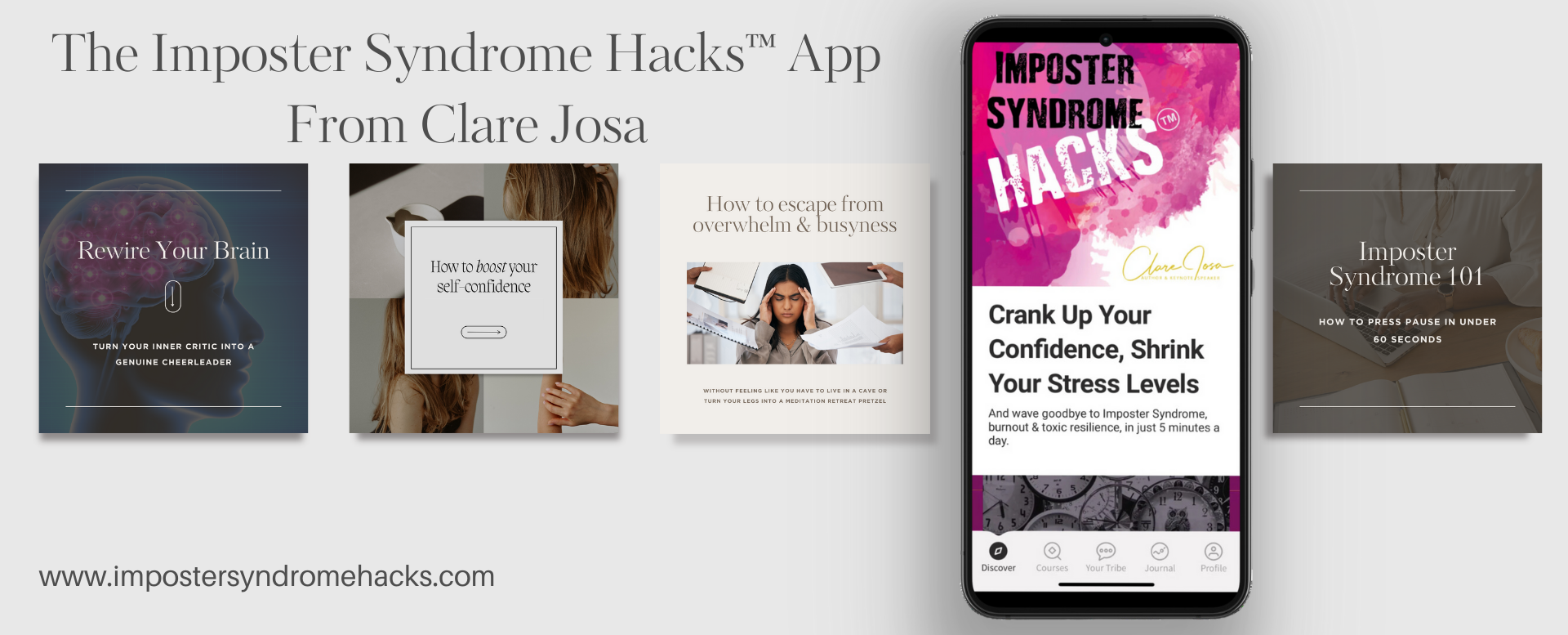Does the 'alter ego' approach help with Imposter Syndrome? This is a question I was asked on LinkedIn recently, and I thought the answer might be helpful, given how popular this approach is.
Using an 'alter ego' is where you look at someone you know or someone famous who exudes the confidence you want to feel inside, then you 'channel' them, effectively taking on aspects of their personality.
So if you want to rock it on stage, you might channel your inner Beyoncé or Tony Robbins. If you want to make the C-Suite Leap, you might channel your inner Sara Blakely or Alan Sugar. If you want to cook up a storm in your next dinner party, you might channel your inner Jamie Oliver. If you want to build a six-pack at the gym, it might be time for your inner Joe Wicks to come out to play.
Sounds great?
But I'm not a big fan of the alter ego approach. In fact, I'd go so far as to say it can be downright dangerous. So if you're curious about how it works (and how it doesn't), here's what you need to know.
An 'alter ego' can help with the symptoms of Imposter Syndrome. It can help us to feel more courageous. With Imposter Syndrome being an identity-level issue (see the Imposter Syndrome Iceberg) then anything that helps us to feel like we're someone else who we perceive as 'good enough' can help us to feel better.
Having an 'alter ego' feels like wearing Batman's caped crusader outfit - or like Clark Kent taking off his glasses and putting his underpants on the outside of his trousers. We show up differently. We take on a different personality. We do and say different things.
So, to the outside world, it can look like we've kicked Imposter Syndrome to the curb.
But inside, we secretly know we're lying to ourselves.
Taking on an 'alter ego' is about pretending to be someone we're not, so we can finally feel good enough. But it doesn't work, because it's not 'us' doing the doing. So it doesn't create the identity-shift required to clear Imposter Syndrome.
The alter ego approach is essentially a coping strategy - a sticky plaster (Band Aid, for my American friends) - and sticky plasters eventually fall off.
Why The Alter Ego Approach Makes Things Worse
Pretending to be someone you're not always comes with a crash - often at three in the morning when our inner critic is doing its thang, making sure that we can't drown out its criticism. At some point, the mask has to come off and we have to live with who we really think we are.
Given that one of the biggest issues for people with Imposter Syndrome is feeling like a fake or a fraud who will be 'found out', it doesn't make much sense to add another mask to the collection by encouraging someone to pretend to be someone they're not.
Cue inner critic blowing raspberries and yelling: "Hey, you're so rubbish that you have to pretend to be Fred from Accounts before you pitch to a client!"
The alter ego approach doesn't address the root cause triggers for Imposter Syndrome, meaning it will come back as soon as we stop pretending to be Fred / Beyoncé / Joe. So while it can be a useful emergency quick fix, it's far from ideal if someone is already feeling scared that they're not good enough.
It's a coping strategy that comes from fear, rather than self-love and acceptance, and it gives the unconscious mind the message that we're 'so not good enough' that we have to secretly pretend to be someone else to get the job done.
What Can You Use Instead Of The Alter Ego Approach For Imposter Syndrome?
The way I approach this with clients is to get them to connect with the aspect of themselves that feels or acts that way, then to clear out the blocks to being that version of themselves at the root cause level, so they can let that aspect of themselves shine. This way their confidence is authentic and their passion shines through in a way that it never could if you're carrying the burden of being someone else.
And it's about setting themselves free, rather than wearing yet more subconscious armour.
Yes, of course I'll help clients with 'emergency quick fixes' and temporary strategies while we do this work, but they don't set us free. It's getting in there at the identity level - 'who am I to do this?' and clearing out those hidden blocks which creates breakthroughs.
Want to do this for yourself?
How to take off your secret masks as you set yourself free from Imposter Syndrome is in Step Four of Ditching Imposter Syndrome, if you've already got the book (but it works best if you've done steps one through three first!). And I guide you step-by-step through how to do this in my 90-day Stepping Up To Lead programme.
x Clare
P.S. Are you an experienced coach or mentor (in-house or your own business) who would love to know how to work like this with clients? Find out more about my Certified Imposter Syndrome Mentor programme here. Applications are now open for the next enrolment, but there are only twelve places and some of them have been snapped up already.

